With a history spanning back millenia, the humble mirror has a rich and versatile past - a story preserved in the antique mirrors we see today.
Since ancient mirrors' inception around 8,000 years ago, different cultures have made mirrors out of a myriad of different materials including copper, polished stone and also bronze mirrors - culminating in the aluminium-backed modern mirrors we all have in our homes today.
Nowadays, antique mirrors have both stunning aesthetic decorative purposes and practical applications.
Not only do mirrors amplify natural and electrical light, they are masters of illusion; making spaces appear and feel so much bigger than their physical dimensions.
And despite their transition from a rare actual object owned by the few to commonplace possessions, the mirror’s decorative popularity still endures to this day, especially when it comes to rare and authentic antique mirrors.
A brief history of mirrors -
when were mirrors invented?
The oldest mirror in the world according to scientists can date back to Anatolia (modern-day Turkey), circa 8,000 years ago.
At that time they were crafted from obsidian (a type of volcanic glass) which was ground and polished until it would reflect light and images - albeit darkly and very distortedly.
All across the world in the following millenia the mirror or looking glass appeared again and again in different forms.
They were made from polished copper in Mesopotamia and Egypt from 4,000 to 3,000 BC, in Central and South America from polished stone from 2,000 BC onwards. And they also appeared in China and India made from bronze and copper around the same time, so metal mirrors remained in use.
Venetian innovation
Techniques for manufacturing mirrors advanced along with society. It was the Venetians that popularised mercury mirrors, so early (pre-18th century) mirrors of this manufacture are likely to be Italian.
These were made by coating glass with a mixture of tin and mercury.
As a general rule, early glass mirrors tend to be slightly smaller, or with sections of mirrored glass, as it wasn't possible to produce single sheets of large glass until the late 18th century.
As you would expect, only the very wealthy could afford very large panes of clear glass.
For this same reason, throughout history floor length mirrors were rare. The majority of people never saw their full reflection - unthinkable in today’s modern age.
The success of Venetian mirror makers was the envy of Europe, to the extent it was said that the French court of Louis XIV sent spies to Venice to steal their secrets.
The spies must have been successful as France soon became renowned mirror makers in their own right!
One of the first uses for the ability to create Venetian mirrors in France was creating an enchanting hall of mirrors in the Palace of Versailles, featuring 357 mirrors titled the ‘Galerie des Glaces’.
The French did not keep as tight-lipped as the Venetians about their mirror-making secrets, and techniques spread to other countries soon after.
In the early 19th century, a new, safer method of mirror-making was invented, using silver nitrate to replace the highly toxic mercury. This soon replaced mercury altogether.
Today we use aluminium in mirrors. It’s lighter and cheaper, and crucially, not poisonous!
Mirror frames
Earlier mirror frames tend to be made of carved wood or carved wood and gesso.
They are called giltwood mirrors if a thin layer of gold leaf has been applied over the carved surface.
Pine and gesso is a more common material, with the detail being made from wire and gesso. A thin layer of gold leaf is usually applied over the top.
Rococo style mirrors
The Rococo style, or Late Baroque style, began circa 1730.
Rococo wall mirrors are characterised by their heavy, ornate frames. The complex frames were sculpted in plaster and often gilded.
Derived from ‘Rocaille’, which was originally a method of decorating using concrete, pebbles and seashells, Rococo style uses natural forms like shells, and floral and leaf motifs.
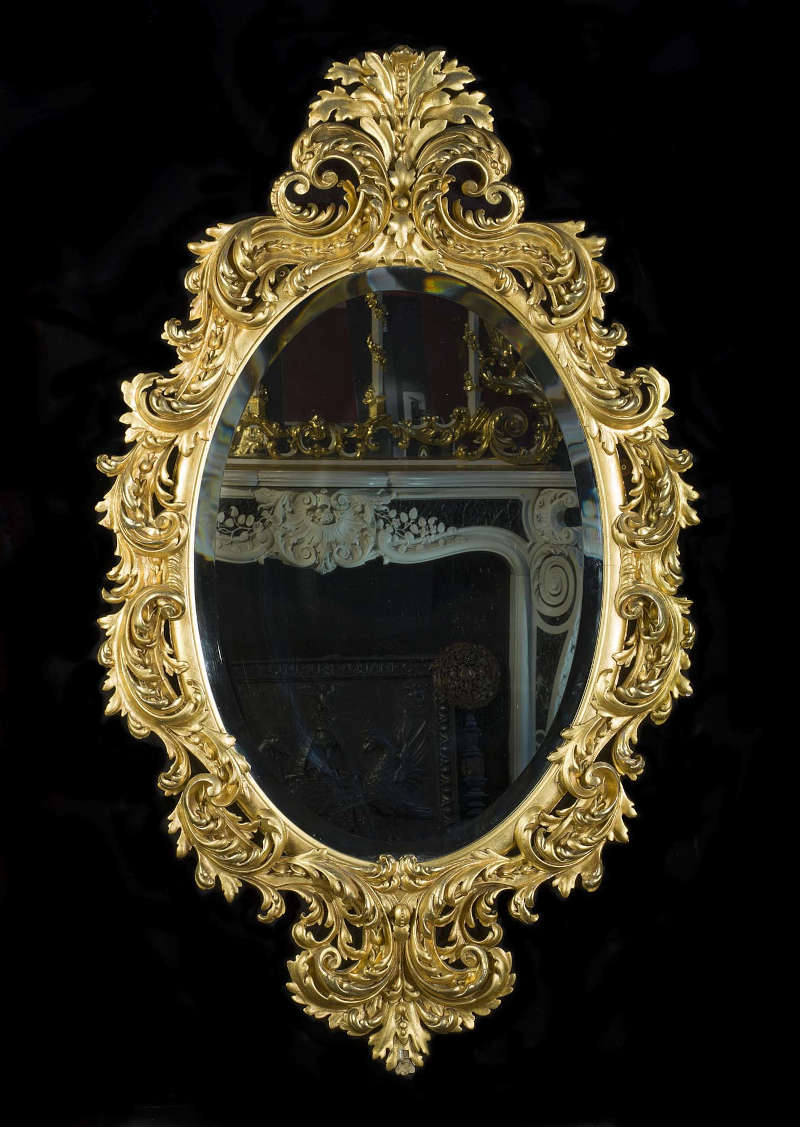
English Regency wall mirrors
The Regency era took place between circa 1811 and 1820, at the end of the Georgian era.
English Regency mirrors were more angular and simple, often with architectural columned frames.
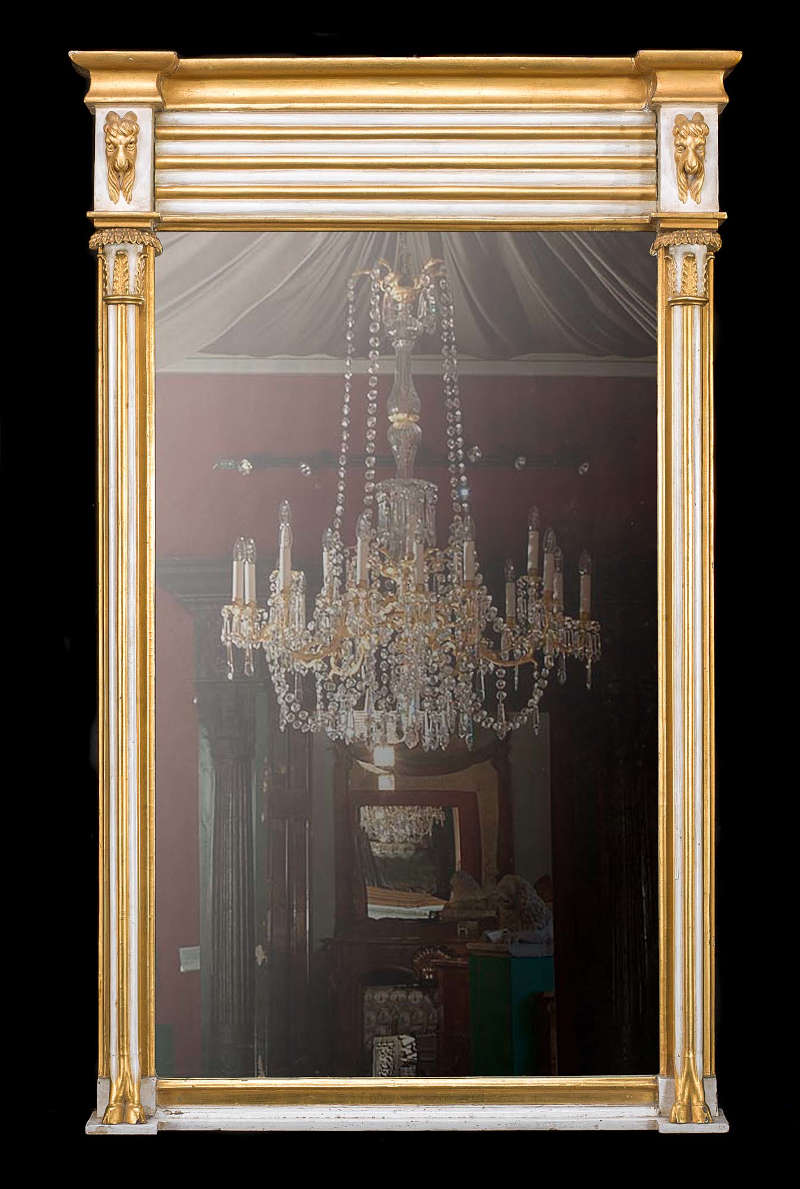
French overmantel mirrors
Overmantel mirrors are designed to fit over a mantelpiece, usually resulting in a flat surface bottom edge that runs parallel to the mantel.
French overmantel mirrors are some of the most decorative mirrors. They are often very tall, intended to sit above fireplaces in rooms with very high ceilings.
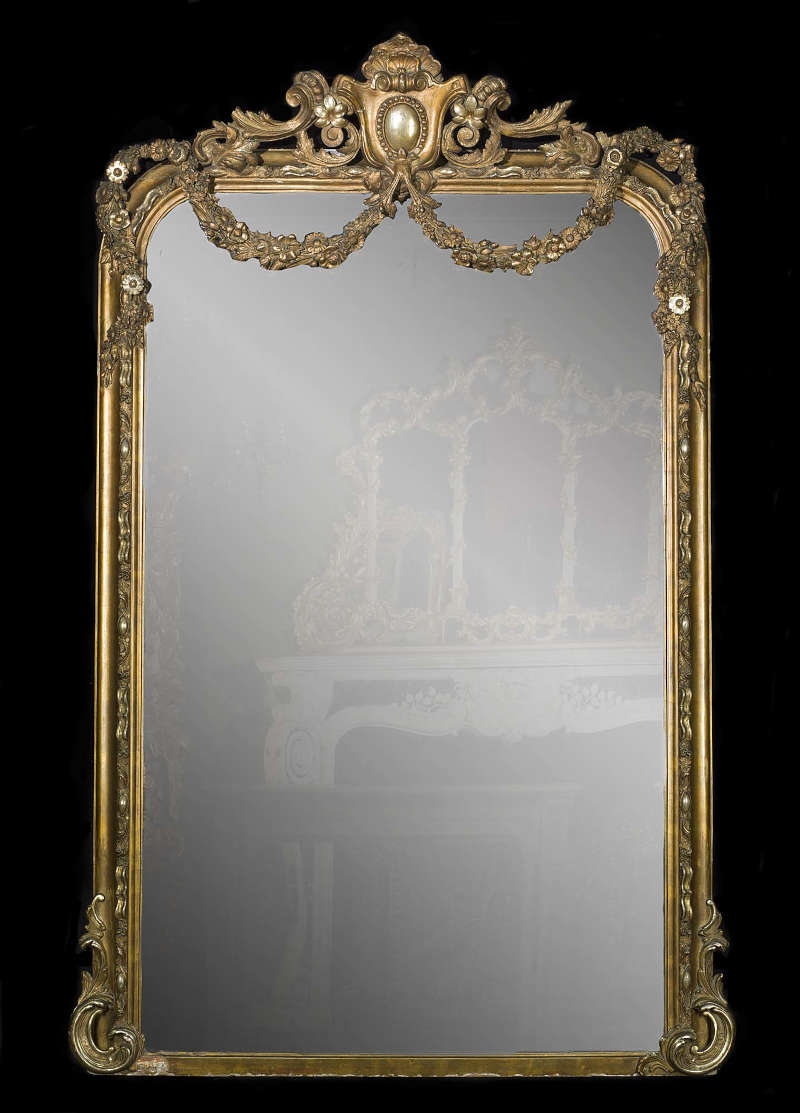
Chippendale style mirrors
English mirrors of the 18th century often draw inspiration from Thomas Chippendale, with fine carving and a light frame.
Chippendale style furniture was recognised for its innovative design and high quality and was influenced by the Rococo style, which resulted in ornate gilded mirrors.
Chippendale style mirrors are most often naturalistic in form.
They are generally made of mahogany, but are also made of walnut, cherry or maple.
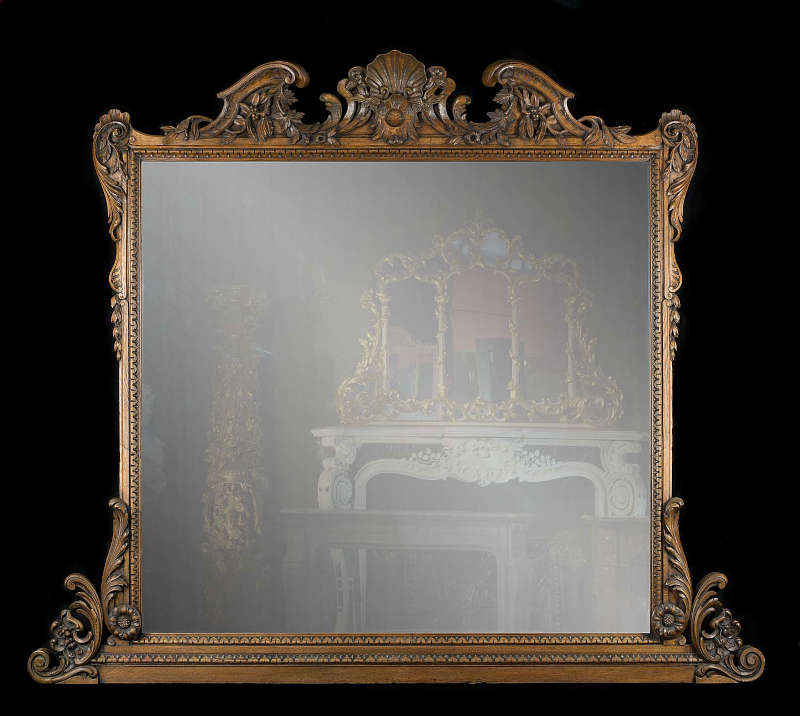
Victorian mirrors
Victorian mirrors were made during the reign of Queen Victoria, between 1837-1901.
Mirrors of this period often adopted styles of periods past, and were known for being grand or elaborate.
Victorian mirrors are usually the most heavily carved, with bold decoration.
The Victorians didn’t solely favour gilt, but often opted for woods such as mahogany or rosewood.
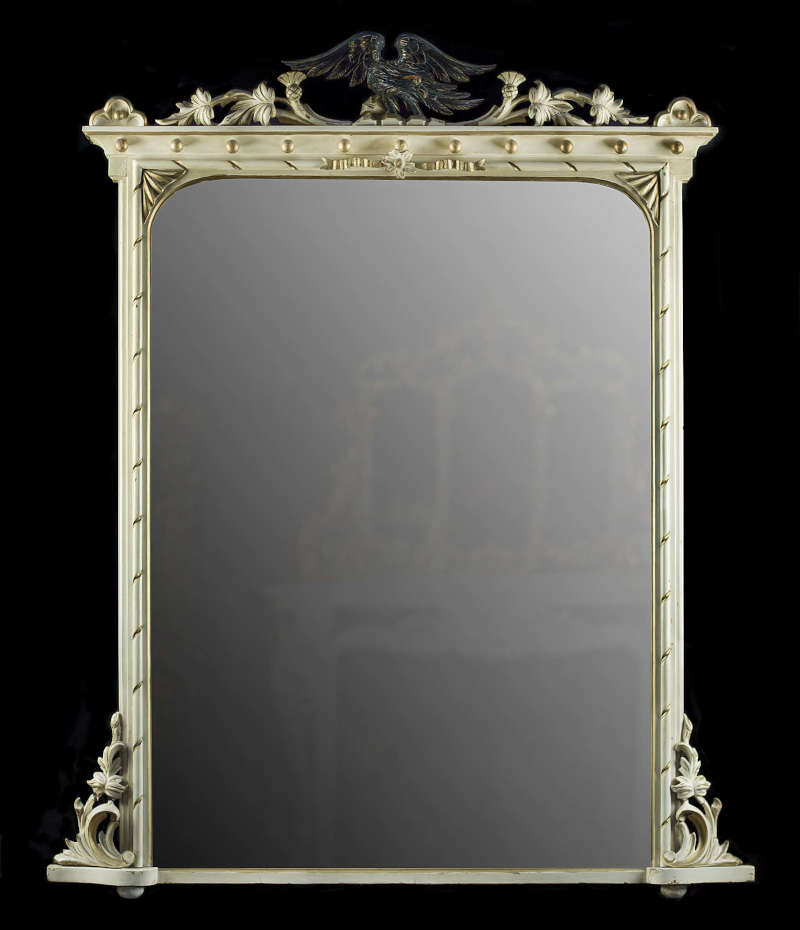
Tips for buying the perfect mirror
When buying an antique mirror it is always important to check the glass for any damage, chips, cracks or scratches.
It is also desirable to have the original glass that the piece was made with. This might be mercury glass which is particularly sought-after.
A good way to identify mercury glass mirrors is to see if there is a slight sparkle to the reflective surfaces.
Conclusion
Mirrors have a long and interesting history that stretches across the world and dates back centuries.
It is this rich history and the unique characteristics of each style of mirror that makes an antique mirror an attention-demanding centrepiece for any room.
Also, find out how to identify your antique mirror’s value with our guide.
If you’re looking for a beautiful antique mirror, Westland London have a wide and varied selection to choose from. Polished stone mirrors, silver mirrors, natural mirrors, flat mirrors, convex mirrors… all representing different, fascinating periods in time!
Check out our stunning range here and please contact us for more information.